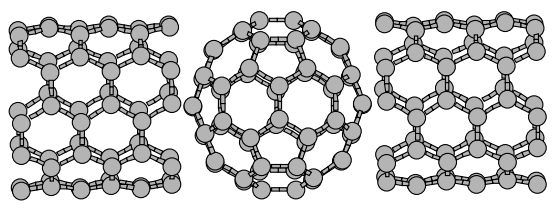We have investigated the electronic properties of a C60 molecule in between carbon nanotube leads. This problem has been tackled within a quantum chemical treatment utilizing a density functional theory-based LCAO approach combined with the Landauer formalism. Owing to low-dimensionality, electron transport is very sensitive to the strength and geometry of interfacial bonds. Molecular contact between interfacial atoms and electrodes gives rise to a complex conductance dependence on the electron energy exhibiting spectral features of both the molecule and electrodes. These are attributed to the electronic structure of the C60 molecule and to the local density of states of the leads, respectively.

We have investigated the electronic properties of a C60 molecule in between carbon nanotube leads. This problem has been tackled within a quantum chemical treatment utilizing a density functional theory-based LCAO approach combined with the Landauer formalism. Owing to low-dimensionality, electron transport is very sensitive to the strength and geometry of interfacial bonds. Molecular contact between interfacial atoms and electrodes gives rise to a complex conductance dependence on the electron energy exhibiting spectral features of both the molecule and electrodes. These are attributed to the electronic structure of the C60 molecule and to the local density of states of the leads, respectively.
